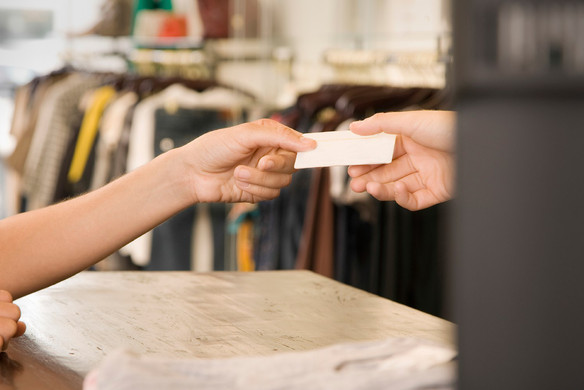Table of contents
The EMV liability shift went into effect last October. Which means that if you’re not accepting chip cards, you could now be on the hook for certain types of in-person credit card fraud.
All of this is in the name of making the way we pay more secure. The banks are issuing EMV chip cards (which are much more secure than magstripe part) as part of this effort. And sellers are being asked to do their part by upgrading their payments terminals to be able to accept EMV chip cards. To accelerate things, if you’re not accepting EMV chip cards, the liability for certain types of counterfeit fraud could now fall on you.
The liability shift may sound scary, but there’s no cause for alarm. The Square Reader for contactless and chip is an affordable, easy-to-set up way to get EMV-complaint.
We’re also here to provide you with all the need-to-know information about the upcoming payments changes and how they will affect your business. You can sign up for our monthly newsletter, Town Square News, to stay up to date on everything EMV and NFC — and get other tips to help you run your business.
Since there’s a lot of swirl out there, we thought it would be helpful to debunk some myths about the liability shift. Here are some common misconceptions:
Myth 1: Upgrading to EMV is a law.
A lot of people get this wrong. There’s actually no law that requires businesses to be EMV compliant by October. It’s up to each individual seller to decide whether or not they want to upgrade. What is changing is the way that the banks and the processing networks handle fraudulent charges. The liability for certain types of in-person fraud (which we’ll go into in more detail below) could be passed on to your business after October 1, 2015, if you haven’t upgraded to EMV. So even though it’s not officially a law, it’s a good idea to protect yourself by ordering an EMV reader (like the Square Reader for contactless and chip) soon.
Myth 2: Upgrading to accept EMV is expensive.
True, the nationwide cost of upgrading to EMV will cost a pretty penny — between 8 billion and 12 billion dollars, by some estimates (think of all those ATM terminals and ticketing stations that need to be switched out). But we’re committed to making the shift to EMV as easy and affordable as possible for all businesses—big and small.
Myth 3: Once you implement EMV, you can’t take magstripe cards.
Just because you take EMV cards doesn’t mean you can’t still process magstripe cards (most chip cards also have a magstripe on the back). You can ring up items for EMV and NFC transactions on your Stand just like you normally do.
But remember, if someone hands over a chip card to pay, you’ll need to process it as an EMV transaction (and dip the card instead of swipe it) to be protected from the liability shift. Luckily, if you have the Square Reader for contactless and chip connected, the system will flag anything that should have been an EMV transaction — and then tell you to process it again by dipping the card.
Myth 4: You have to install a PIN pad to accept EMV.
Nope — you don’t need a PIN pad to accept chip cards. If you use the Square Reader for contactless and chip, customers sign for EMV transactions, the same way they do with magstripe transactions. So you don’t need any additional pieces of hardware.
Myth 5: The liability shift applies to all fraudulent charges at your business.
This one’s a bit complicated. Many people think that the liability shift will make you responsible for all fraud at your business. Not the case. The liability shift actually only applies to a small subset of fraudulent transactions, known as “card-present” counterfeit EMV fraud. Essentially, this means that if a fraudster pays with a counterfeit EMV card, and you process the payment as a magstripe transaction, you could be held liable. Reason being that if you had processed it as an EMV transaction, the fraud would have been detected. Another way to think about it is that the liability shifts to the party with the lesser technology.
For fraudulent charges related to counterfeit magstripe cards, and fraudulent charges associated with a counterfeit EMV card on an EMV reader (which hardly ever happens), the banks will still absorb these costs in most cases. The same is true with lost and stolen cards and online fraud — nothing in the policy changed in October (you’re typically still covered).
Myth 6: EMV is something new.
False. EMV has been the standard in the rest of the world for decades (if you’ve been to Europe, you’ve probably noticed this). And it’s been proven to help cut down on card-present fraud. The UK, for example, has seen a 70 percent decline in counterfeit card transactions since adopting chip cards, according to Barclays. So it’s high time we adopt it here.
There’s a lot of information out there about the liability shift — but hopefully now you can spot some of the most common misconceptions.
![]()











